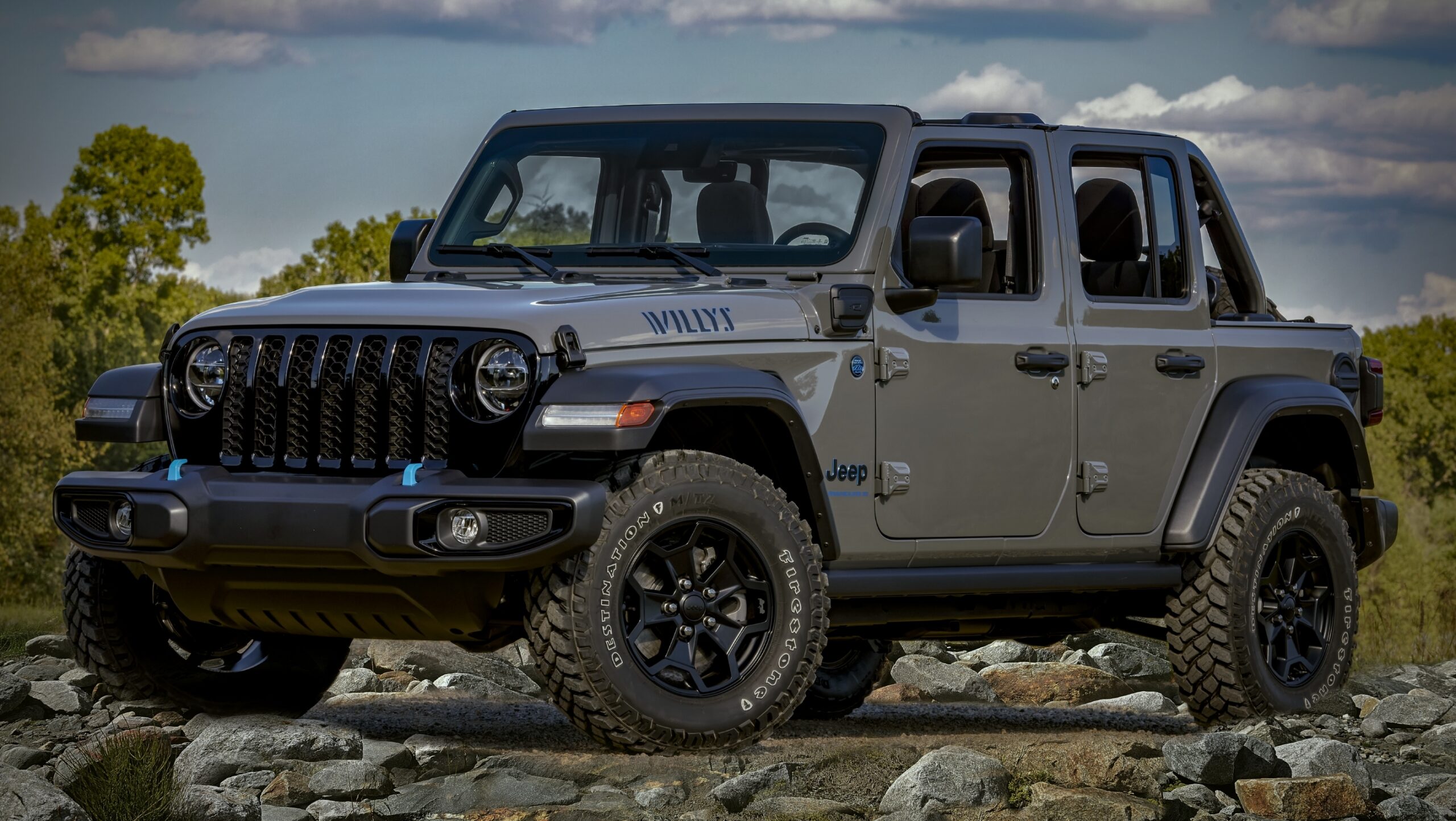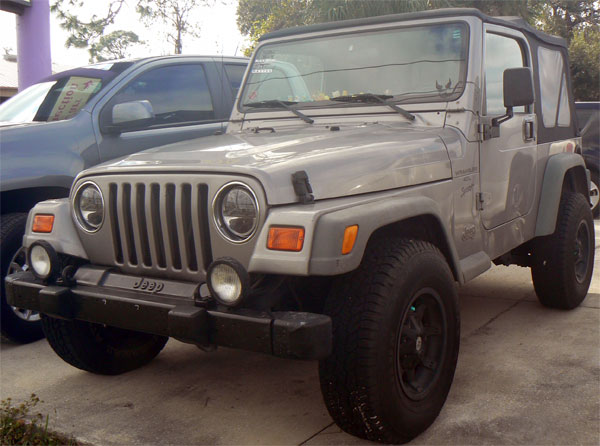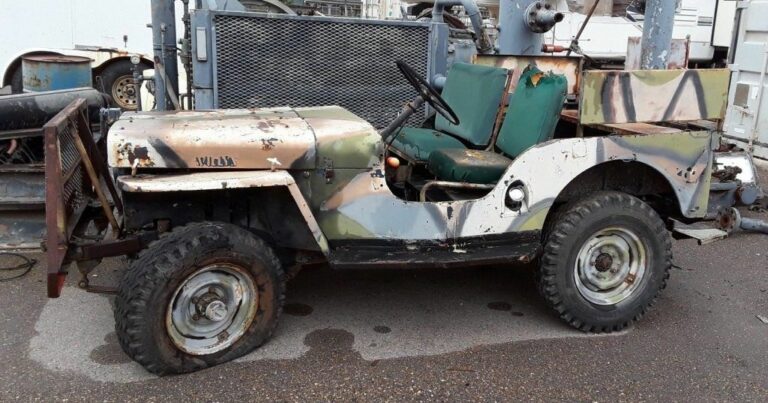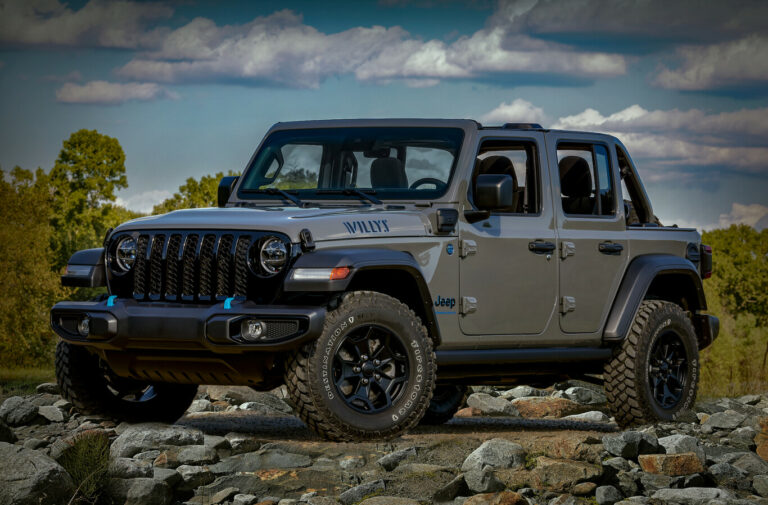Jeep Wrangler 2 Door Trunk Dimensions: A Comprehensive Guide to Maximizing Your Off-Road Cargo Space
Jeep Wrangler 2 Door Trunk Dimensions: A Comprehensive Guide to Maximizing Your Off-Road Cargo Space jeeps.truckstrend.com
The Jeep Wrangler, an icon of adventure and off-road capability, comes in various configurations, with the classic 2-door model holding a special place in the hearts of purists. While renowned for its nimble size, unparalleled maneuverability, and classic aesthetics, the 2-door Wrangler presents a unique challenge and opportunity when it comes to cargo space. Understanding the Jeep Wrangler 2 Door Trunk Dimensions is crucial for every owner, whether you’re planning a weekend camping trip, a daily commute, or an epic overland expedition. This article serves as a detailed guide, breaking down everything you need to know about the cargo area behind the rear seats, from official measurements to practical tips for maximizing every inch.
Understanding the 2-Door Wrangler’s Unique Cargo Space
Jeep Wrangler 2 Door Trunk Dimensions: A Comprehensive Guide to Maximizing Your Off-Road Cargo Space
Unlike its larger 4-door sibling, the 2-door Jeep Wrangler (specifically models like the JL, JK, TJ, and YJ) features a more compact design, which directly impacts its rear cargo area. This smaller footprint is a deliberate design choice, enhancing its legendary off-road prowess by allowing tighter turns and easier navigation through challenging terrain. However, it also means a more limited "trunk" space behind the second row of seats.
The term "trunk" for a Wrangler might be a bit of a misnomer, as it doesn’t feature a traditional enclosed boot like a sedan. Instead, it refers to the cargo area accessible through the rear swing gate, directly behind the rear passenger seats. This space is often open to the elements, especially with a soft top or when the hardtop panels are removed, making understanding its true dimensions and how to secure your belongings even more important. The challenge isn’t just about volume but also about the shape, accessibility, and the unique considerations of an open-air vehicle.
Official Trunk Dimensions: A Detailed Breakdown
To truly understand what fits in your 2-door Wrangler, let’s delve into the specific dimensions. While exact figures can vary slightly between generations (e.g., JL vs. JK), we’ll focus primarily on the modern JL Wrangler 2-door, which represents the current standard.
The critical measurements for the 2-door Wrangler’s cargo area behind the rear seats are typically:
- Volume (with rear seats up): Approximately 12.9 cubic feet (0.36 cubic meters) for the JL Wrangler. This is a compact space, comparable to the trunk of a small sedan.
- Volume (with rear seats folded down): This is where the 2-door Wrangler significantly expands its utility. With the rear seats folded forward, the cargo volume typically increases to around 31.7 cubic feet (0.90 cubic meters) for the JL. This transforms the space into a much more versatile area suitable for larger items.
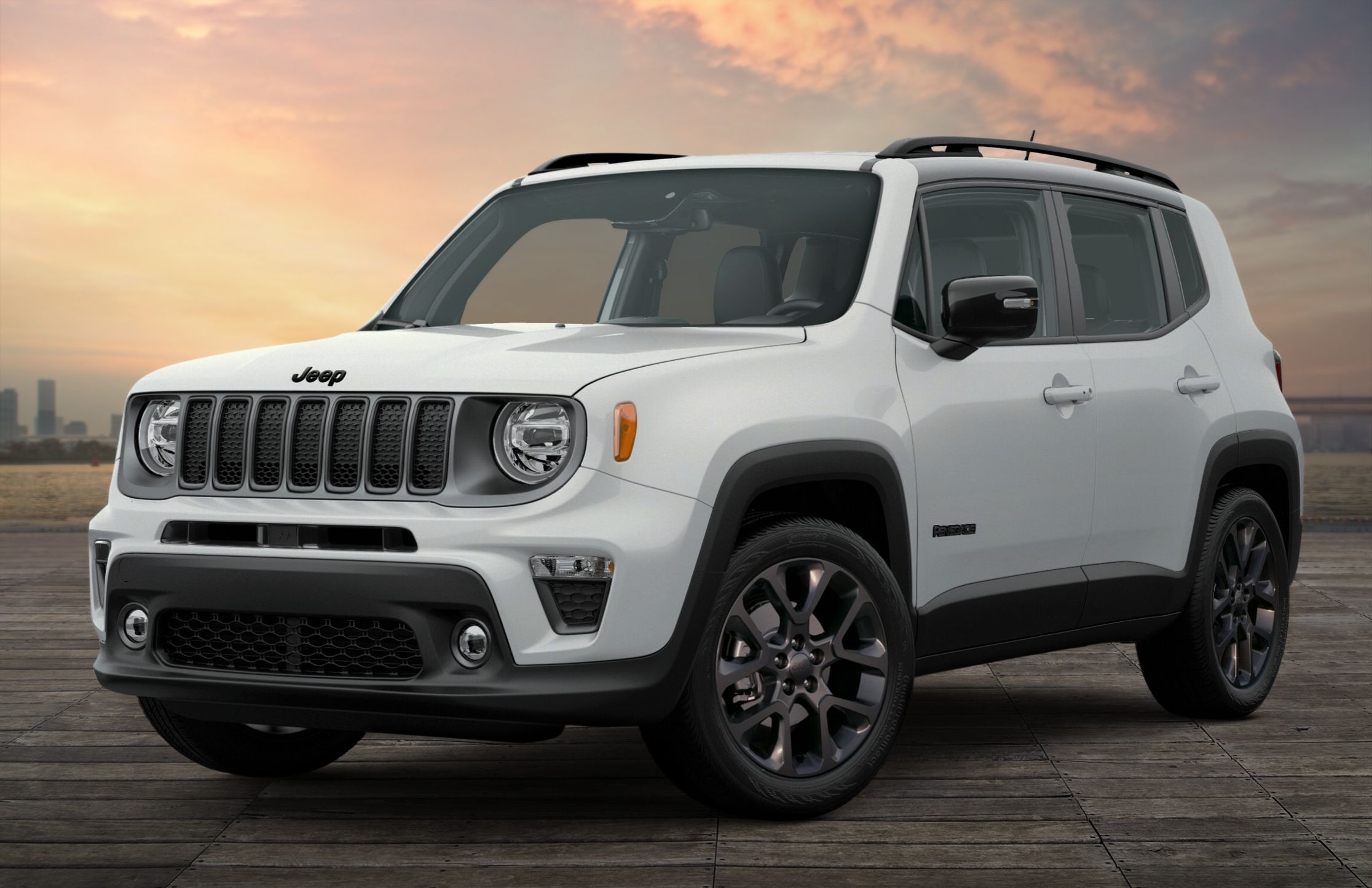
Beyond cubic feet, practical linear measurements are vital:
- Length (Depth) Behind Rear Seats (Seats Up): Around 14-16 inches (35-40 cm) from the back of the rear seats to the closed tailgate. This is a very shallow space.
- Length (Depth) with Rear Seats Folded: Extends significantly, often to 45-50 inches (114-127 cm) from the front of the folded seats to the tailgate.
- Width: The width of the cargo area is generally consistent across the vehicle’s interior, but it’s important to consider the narrowest point, which is often between the wheel wells. This typically ranges from 36-40 inches (91-102 cm). The widest point might be closer to 50-55 inches (127-140 cm).
- Height (Floor to Hardtop/Soft Top): Approximately 36-38 inches (91-97 cm) from the cargo floor to the interior roofline (hardtop). This height can vary slightly with a soft top due to its flexible nature.

These dimensions highlight that while the space behind the upright rear seats is minimal, folding them down unlocks a surprisingly functional area for a vehicle of its size.
Maximizing Cargo Space: Strategies and Tips

Given the compact nature of the 2-door Wrangler’s trunk, smart packing and strategic modifications are key.
-
Folding the Rear Seats: This is the most immediate and impactful way to increase cargo volume. The rear seats in a Wrangler are designed to fold forward easily, creating a nearly flat load floor.
- How-to: Typically, you’ll find a strap or lever at the base of the seat or on the side. Pulling this will allow the seatback to fold forward, often resting against the front seats or the floor.
- Benefits: Transforms the shallow cargo area into a much longer, more usable space suitable for camping gear, sports equipment, or larger boxes.
-
Utilizing Vertical Space: Don’t just think horizontally. The Wrangler offers good headroom, which can be leveraged for cargo.
- Cargo Nets & Barriers: Keep items from sliding around or falling into the front cabin.
- Overhead Racks/Shelves: Some aftermarket solutions allow you to mount a small shelf above the cargo floor, creating a second tier for lighter items.
- Soft Bags & Duffels: These conform better to irregular spaces than rigid suitcases. Stack them carefully.
-
External Carriers: When interior space isn’t enough, look outside the vehicle.
- Roof Racks: Ideal for bulky items like kayaks, bicycles, or large storage boxes. Ensure your hardtop or soft top can support the load.
- Hitch Carriers: A receiver hitch allows for cargo baskets or bike racks, extending your carrying capacity off the rear.
- Spare Tire Carriers: Some designs integrate a platform or mount for fuel cans or other small items.
-
Smart Packing Techniques:
- Modular Systems: Use stackable bins or bags that fit snugly together.
- Deflate & Compress: For items like air mattresses or clothing, use vacuum-seal bags to reduce their volume.
- Distribute Weight: Keep heavier items low and centered for better vehicle stability, especially off-road.
-
Removing the Rear Seats (Extreme Cases): For dedicated solo adventurers or those needing maximum space for long trips, the rear seats can often be unbolted and removed entirely. This creates the largest possible interior cargo volume but is not a quick process and means no rear passengers.
Practical Applications: What Fits?
Understanding the dimensions in practical terms helps set expectations:
-
With Rear Seats Up (12.9 cu ft):
- A few bags of groceries.
- A small backpack or duffel bag.
- Emergency roadside kit, first-aid kit, and a small toolbox.
- A medium-sized cooler (vertically, if it’s tall and narrow).
- A standard carry-on suitcase (might need to be placed on its side).
- What often doesn’t fit: A full-size stroller, large suitcases, multiple camping chairs, or a large dog crate.
-
With Rear Seats Folded Down (31.7 cu ft):
- Camping gear for one or two people (tent, sleeping bags, small cooler, cooking gear).
- Several large duffel bags or a couple of full-size suitcases.
- A small mountain bike (front wheel removed).
- A medium-sized dog crate.
- Building supplies like lumber (if not too long) or a few bags of cement.
- Still challenging: Large furniture, very long items (e.g., surfboards without roof rack), or multiple large appliances.
The 2-door Wrangler, while compact, can be surprisingly versatile when its cargo space is managed effectively.
Challenges and Considerations
While the 2-door Wrangler offers unique advantages, its cargo area comes with specific challenges:
- Limited Width/Depth: The fundamental limitation remains the vehicle’s overall size. You won’t fit a full-size sheet of plywood inside without significant modification or external transport.
- Security Concerns with Open-Air Design: With soft tops, or when hardtop panels are removed, your cargo is more visible and less secure. Items are easily accessible to potential thieves. Investing in lockable storage solutions is highly recommended.
- Weather Protection: Rain, dust, and mud can easily enter the cargo area, especially during off-roading or with the top down. Use waterproof bags or cargo liners to protect your belongings.
- Impact of Aftermarket Accessories: Subwoofers, onboard air compressors, or custom storage drawers can further reduce usable space. Plan accordingly.
Aftermarket Solutions for Enhanced Cargo Management
The aftermarket industry thrives on enhancing the Wrangler’s utility. Many solutions exist to optimize the 2-door’s cargo space:
- Cargo Management Systems: Custom-fit drawers, slides, and modular shelving units that fit precisely into the rear cargo area, offering organized and often lockable storage.
- Trunk Organizers: Collapsible bins, nets, and pouches that help keep smaller items contained and prevent them from rolling around.
- Lockable Storage Boxes/Safes: Steel boxes that can be bolted down, providing secure storage for valuables even when the top is off.
- MOLLE Panels: Military-style webbing panels that mount to the interior, allowing you to attach various pouches, tools, and gear using MOLLE-compatible accessories.
- Tailgate Tables/Storage: Fold-down tables or storage bags that attach to the inside of the tailgate, adding small, accessible utility space.
Practical Advice and Actionable Insights
- Measure Your Gear: Before any big trip or purchase, measure the specific items you plan to carry. This is the most accurate way to determine if they’ll fit.
- Invest in Flexible Storage: Soft-sided luggage, duffel bags, and compressible packing cubes are your best friends in a Wrangler.
- Consider Your Primary Use Case: If you frequently carry passengers and gear, the 2-door might require more creative solutions (or a roof rack) than a 4-door. If it’s mostly solo adventures, folding the seats makes it very capable.
- Don’t Overload: Always be mindful of your vehicle’s Gross Vehicle Weight Rating (GVWR) and Gross Axle Weight Rating (GAWR). Overloading can compromise safety and vehicle performance.
- Secure Everything: Loose items can become dangerous projectiles in an accident or during aggressive off-roading. Use tie-downs, nets, and organizers.
Table: Key Jeep Wrangler 2-Door Trunk Dimensions (JL Model Example)
| Configuration | Volume (Cubic Feet / Cubic Meters) | Length/Depth (Inches / cm) (Approx.) | Width (Inches / cm) (Approx. – Between Wheel Wells) | Height (Inches / cm) (Approx. – Floor to Hardtop) | Notes |
|---|---|---|---|---|---|
| Rear Seats Up | 12.9 cu ft / 0.36 cu m | 14-16 in / 35-40 cm | 36-40 in / 91-102 cm | 36-38 in / 91-97 cm | Minimal space, suitable for small items. |
| Rear Seats Folded Down | 31.7 cu ft / 0.90 cu m | 45-50 in / 114-127 cm | 36-40 in / 91-102 cm | 36-38 in / 91-97 cm | Significant increase, nearly flat load floor. |
| Rear Seats Removed | ~40+ cu ft / ~1.1+ cu m | 55-60+ in / 140-152+ cm | 36-40 in / 91-102 cm | 36-38 in / 91-97 cm | Maximum interior volume, permanent modification. |
Note: Dimensions are approximate and can vary slightly based on specific model year, trim, and measurement technique.
Frequently Asked Questions (FAQ)
Q: Is the 2-door Wrangler practical for families?
A: For small families with young children, it can be, especially if you prioritize off-road capability and don’t need extensive cargo space daily. However, for families with multiple older children or those requiring significant gear (strollers, sports equipment), the limited rear seating and cargo space might make the 4-door Wrangler Unlimited a more practical choice.
Q: Can I fit a stroller in the trunk of a 2-door Wrangler?
A: A compact, umbrella-style stroller might fit with the rear seats up, but a full-size or jogging stroller will almost certainly require the rear seats to be folded down, consuming most of the available space.
Q: How much does folding the seats increase cargo space?
A: Folding the rear seats in a 2-door Wrangler dramatically increases the usable cargo space, more than doubling the volume from approximately 12.9 cubic feet to 31.7 cubic feet in the JL model. This is the single most effective way to expand your carrying capacity.
Q: Are there security issues with the trunk area in a soft-top Wrangler?
A: Yes, the soft top offers minimal security. Items are easily visible and accessible by simply unzipping a window or cutting the fabric. It is highly recommended to use lockable storage boxes or not leave valuables in the vehicle when parked.
Q: What’s the best way to organize the trunk for off-roading?
A: For off-roading, secure everything. Use cargo nets, tie-downs, and modular storage bins that fit snugly. Consider investing in a drawer system or a secured trunk safe for tools, recovery gear, and valuables. Keeping weight low and centered also improves stability.
Q: Does the soft top affect cargo space compared to a hardtop?
A: The soft top generally does not reduce the usable cargo volume at floor level. However, its flexible nature means you can’t stack items as rigidly as against a hardtop, and the perceived height might feel less stable. Also, the security and weather protection aspects differ significantly.
Concluding Summary
The Jeep Wrangler 2-door’s trunk dimensions, while compact when the rear seats are in use, are surprisingly versatile once you understand how to maximize them. This iconic vehicle prioritizes agility and off-road prowess, and its cargo area reflects that design philosophy. With thoughtful packing strategies, the judicious use of internal organization solutions, and the smart application of external carriers, the 2-door Wrangler can comfortably accommodate the gear for most adventures. Embracing the 2-door Wrangler lifestyle means appreciating its unique blend of compactness and capability, knowing that with a little planning, its trunk can be just as ready for adventure as the rest of the Jeep.

